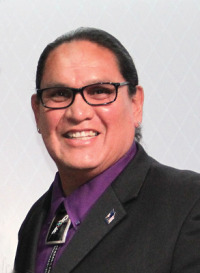
Our nation is in the midst of a historic presidential election. Dozens of debates and the early primaries have made it clear that the 2016 election will be one of the most hotly contested, dramatic elections in our lifetimes.
To assess what’s at stake for Indian Country, we need only look to the accomplishments achieved on the federal level over the past seven years.
Since January 2009, the Obama administration has opened doors within the executive branch that were long closed to Indian Country. At the forefront of Indian Country’s progress is access to the White House. President Barack Obama opened his house by establishing the position of senior policy advisor for Native American affairs to directly report to the president.
President Obama has by far posted more natives to key decision-making positions within his administration than any prior president. He appointed the first-ever Native American solicitor of the Department of the Interior, the first female director of the Indian Health Service, the first female native chair of the National Indian Gaming Commission, and dozens of other Native Americans to serve in key positions throughout his administration.
Thanks to the president, tribal governments now have direct relationships with liaisons and “offices of tribal relations” within nearly every federal agency, from the Department of Agriculture to the Department of Veterans Affairs, all the way up to the White House. Tribal officials are to be credited for seeking out and working with their governmental counterparts in an administration that showed openness to education and respect for the government-to-government relationship with tribal nations.
This administration also is responsible for a number of major policy gains for Indian Country in the areas of health care, public safety, land acquisition, resource protection and much more. The president has worked to begin to reverse a public safety crisis on Indian lands by signing the Tribal Law and Order Act of 2010 and the Violence Against Women Act Reauthorization of 2013 into law.
His Department of Justice (DOJ) has worked with tribal justice officials to stop violence on Indian reservations at the local level, empowering America’s first peoples in the protection of their communities. Where federal prosecutions declined in past administrations, DOJ took great measures to investigate tragic crimes and bring justice to native people, allowing families to heal and communities to move forward.
The president also has worked to improve Indian health care, working to pass the 2010 Indian Health Care Improvement reauthorization. Thanks in large part to the budgets that he put forward—and the work of our champions of Indian Country in Congress who sit on the Interior Appropriations subcommittees—tribes have seen steady and significant increases in funding for critical services to native communities. When the president took office, the Indian Health Service was funded at $3.5 billion. As he enters the final year of his presidency, the IHS will be funded at nearly $5 billion in FY2016. A $1.5 billion increase, during a time when most federal programs are facing budget cuts, is nothing short of remarkable.
The president has also taken administrative action to reform Indian education, economic development, and the restoration of traditional Indian homelands to tribal government control. His administration, more than any other in the past, has worked to protect sites sacred to native people and provide access for religious practices on federal lands. Tribal leaders, be those on the ground in tribal government or those appointed to positions of importance, have fought to have many injustices made right in this historic administration. We applaud them for pushing for humanitarian solutions to age-old problems in Indian Country.
President Obama also has worked tirelessly to help right longstanding wrongs against tribes and individual tribal people. His administration negotiated settlements in decades-old lawsuits, including the $760 million settlement with Native American farmers and ranchers in the Keepseagle case. In December 2010, he signed the Claims Resolution Act into law, which includes the Cobell settlement and four water settlements, benefiting seven tribes in Arizona, Montana and New Mexico.
In addition, the administration recently reached a nearly $1 billion settlement in a decades-old contract support cost litigation to the benefit of hundreds of tribes. The administration also reached settlements with more than 40 other tribal governments in 2012, to compensate for more than a century of federal mismanagement of tribal resources.
Previous administrations either refused to admit fault or offered far below what equity demanded. These settlements bring long-needed justice to thousands of families and individuals throughout Indian Country. They help to begin rebuilding trust that had been fractured due to acrimonious negotiations in past administrations.
An official from the Justice Department summed up the importance of a recent settlement that applies to all of the agreements noted above:
“This agreement does more than simply resolve this pending litigation. It also is an embodiment of a stronger relationship between the United States and the sovereign tribal nations, a relationship that is stronger today than perhaps any time in history.”
In 2017, tribal governments nationwide will begin working with a new administration to institutionalize these historic policy gains.
Possibly more importantly, Indian Country will also work to ensure that these doors remain open by pressing candidates for president to make commitments that they will carry on—and build upon—these policy gains in the next administration. Tribal participation is essential to continued growth and success throughout Indian Country. This why it is imperative that Indian Country get out the native vote, surpassing historic levels in the 2016 election.
While several presidential candidates have made outreach efforts to earn the native vote, and some have even hired natives to help their campaigns, none of the top candidates has yet expressed a policy position in any of their electronic platforms addressing issues that impact Indian Country.
This, despite the fact that federal laws, regulations and court decisions significantly impact the lives of Indian reservation residents more than any other jurisdiction or group of people in the United States.
The first Americans were the last to be granted voting rights in the U.S. Without representation in Congress and without the right to vote, Native Americans suffered the devastating federal policies of removal, allotment and assimilation. These policies cost millions of American Indian lives, took hundreds of millions of acres of tribal homelands, and authorized the forced removal of Indian children from their homes and suppression of native language, culture and religion. With no right to vote, our ancestors fought—and many died—to protect tribal sovereignty and preserve our way of life.
In honoring their sacrifices, we must press presidential candidates in both parties for answers in advance of election day. Will they build upon the respect for the government-to-government relationship established by this administration? Will they appoint Native Americans to serve as decision-makers in their administration? Will they appoint justices to the Supreme Court and the federal bench who understand the federal government’s treaty and trust obligations? All of Indian Country must unite to educate candidates and demand answers.
At the same time, we must hold ourselves accountable. Tribal leaders and grassroots activists must encourage native communities nationwide to get out the native vote, participate in the federal election process, and make a positive impact on these elections. We must show our native vote in numbers that this country has never seen before so that we can continue to rebuild our communities.
No matter who is in the White House, our communities ultimately rely on their local leaders and those native professionals appointed to federal positions to carry on the gains that we have made through history in the protection of tribal sovereignty. The time to vote is now!
As chairman and spokesman for the National Indian Gaming Association, I will continue to work with our sister organizations and tribes nationwide to get out the native vote in 2016. To build on the extraordinary gains of the past seven years, we must continue the tireless work of educating all candidates for federal office about the government’s unique and solemn treaty and trust obligations to all of Indian Country.
Though many strides have been made, there is still a great deal of work to do. I challenge all of Indian Country to be involved in this presidential campaign, and most importantly to make your vote count in 2016.


















